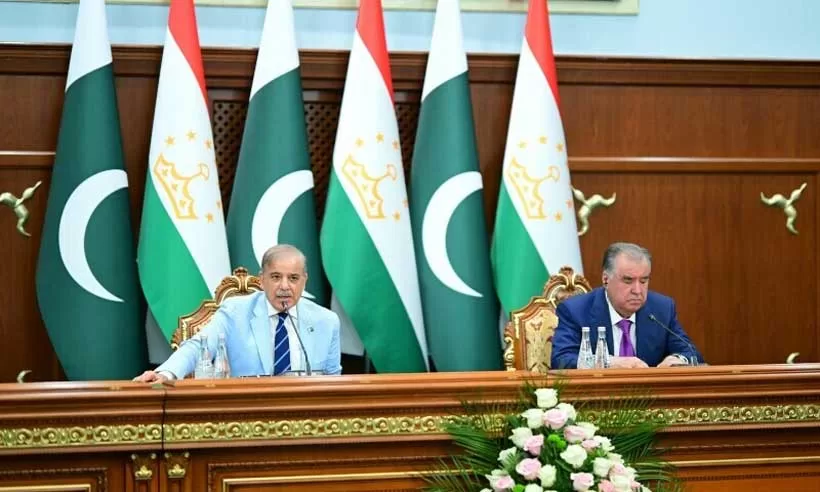Within the context of geopolitical dynamics, the connection between Tajikistan and Pakistan is unusually close, albeit being complex, as seen by the Wakhan Corridor that separates them in northeastern Afghanistan and their scant 16 kilometres at their closest point.
Their diplomatic relationship has its origins in the independence of Tajikistan that followed the fall of the Soviet Union. Since then, the two sides’ relationship has developed gradually, which is clearly shown in the strong commerce and cooperative endeavours. Many high-level meetings have been held with the sole objective of promoting economic ties. This is best demonstrated by Tajikistan’s bold ambitions, announced by Ambassador Said Baig in March 2008, to sell affordable power to Iran and Pakistan, two of its neighbours.
In 2019, Pakistan achieved a noteworthy milestone by granting Tajik passport holders visa-on-arrival rights, hence promoting people-to-people relations. As of right now, there are an estimated 1.2 million Tajiks living in Pakistan, mostly due to economic need and mostly concentrated in the northern city of Ish Kuman. The flood also includes Tajik refugees from past turmoil, such as those from the protracted wars in Afghanistan, who have managed to find permanent safety in Pakistan despite difficulties in determining their precise numbers because of incomplete paperwork and irregular census results. The connection between Tajikistan and Pakistan is a perfect example of how to combine pragmatic economic thinking, humanitarianism, and proximity to navigate the intricacies of regional politics in a way that is resilient and advantageous to both parties.
Prime Minister Shahbaz Sharif’s recent trip to Tajikistan stands out as a significant event in Pakistan’s evolving foreign relations, particularly within the context of Central Asia. This article critically examines the broader implications and key dimensions of this diplomatic mission. the main purpose of the visit is to fostering international ties, engaging in diplomatic negotiations, or holding economic talks. It also raises the concerns how the visit fits into Pakistani domestic politics and how it could affect internal dynamics, paying particular attention to Shehbaz Sharif’s position as prime minister. Bilateral or multilateral ties have also been discussed during the visit, as well as any agreements or partnerships. Taking into account any potential financial effects of the visit, such as trade agreements, investments, or aid packages. The visit has received a great deal of attention from the local and international press, which has portrayed it as an aggressive diplomatic attempt to increase Pakistan’s regional clout and promote positive ties with Tajikistan. The consensus among the public, both at home and abroad, has emphasized Prime Minister Shahbaz Sharif’s attempts to bolster Pakistan’s international standing through strategic diplomacy and economic cooperation. It also enhanced Prime Minister Shahbaz Sharif’s leadership credentials and proactive foreign policy stance within Pakistan’s domestic political landscape.
By strengthening ties with Tajikistan, Pakistan hopes to contribute to regional stability while strategically positioning itself in the context of evolving regional dynamics. Geopolitically, the visit reinforces Pakistan’s commitment to regional stability and peace in Central Asia in South Asia. Pakistan’s aggressive involvement with Tajikistan solidifies its position as a major player in regional events, particularly as Central Asia continues to acquire relevance in global geopolitics. Consolidating alliances that can impact economic growth and stability in the area was probably the visit’s main goal, in line with Pakistan’s larger foreign policy goals.
The visit thereafter underscored Pakistan’s commitment to fortifying bilateral ties with its equivalent in Central Asia. The two countries have strong historical, cultural, and economic ties, which emphasizes the value of diplomatic efforts in promoting understanding and collaboration. It also aims to strengthen these connections by having talks on commerce, security, and stability in the area. Furthermore, the primary focus of Prime Minister Shahbaz Sharif’s visit to Tajikistan was economic cooperation. Pakistan and Tajikistan acknowledged the benefits of regional connectivity projects, particularly the CASA-1000 energy transmission project, and discussed ways to increase trade and investment. The goal of this project is to make it easier for Tajikistan and Kyrgyzstan to transmit excess hydropower to Pakistan through Afghanistan, improving energy security and promoting regional economic integration.
Due to common threats like terrorism and extremism, the security dynamics of South and Central Asia are interwoven. Significant discussions between Tajikistani leadership and Prime Minister Shahbaz Sharif most likely focused on enhancing security cooperation, sharing intelligence, and organizing coordinated responses to counter transnational threats. These cooperative initiatives are essential to maintaining stability and promoting peace in the area as a whole.
Apart from concerns related to economy and security, cultural diplomacy is an essential component in strengthening bilateral ties. The visit provided a forum for commemorating shared cultural heritage and identifying opportunities to promote travel and academic contacts between Tajikistan and Pakistan. These cultural efforts build a solid foundation for long-term cooperation by fostering greater understanding and goodwill across nations. Travel between Pakistan and Tajikistan is expected to rise dramatically with the strengthening of cultural and people-to-people contacts.
With the intention of turning diplomatic talk into concrete deeds, Pakistani Prime Minister Shahbaz Sharif made a calculated trip to Tajikistan. Education scholarships and business alliances were among the agreements that were struck. The visit generated communication and cooperation between Pakistan and Tajikistan, laying the foundation for future interactions. It improved connectivity, economic integration, and peace in Central Asia by reaffirming Pakistan’s position as an active regional participant. Visits of this nature act as stimulants for future years of increased collaboration and mutual advancement.
